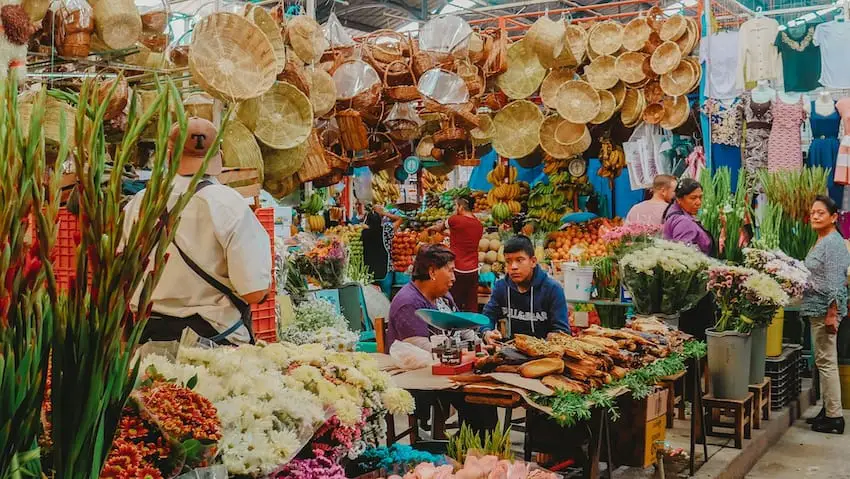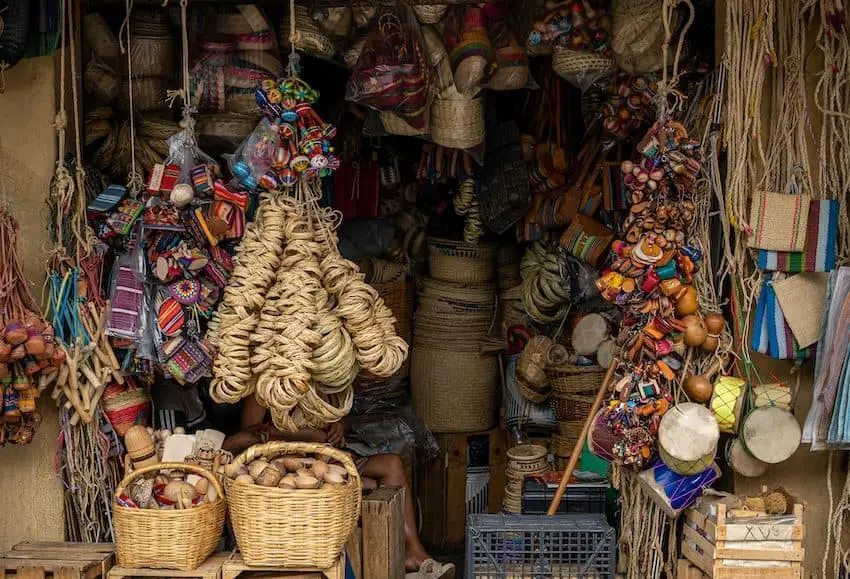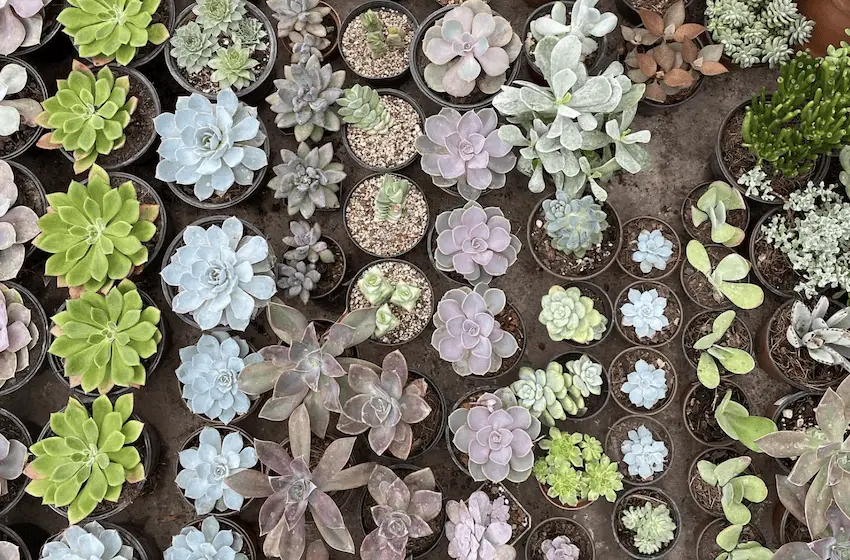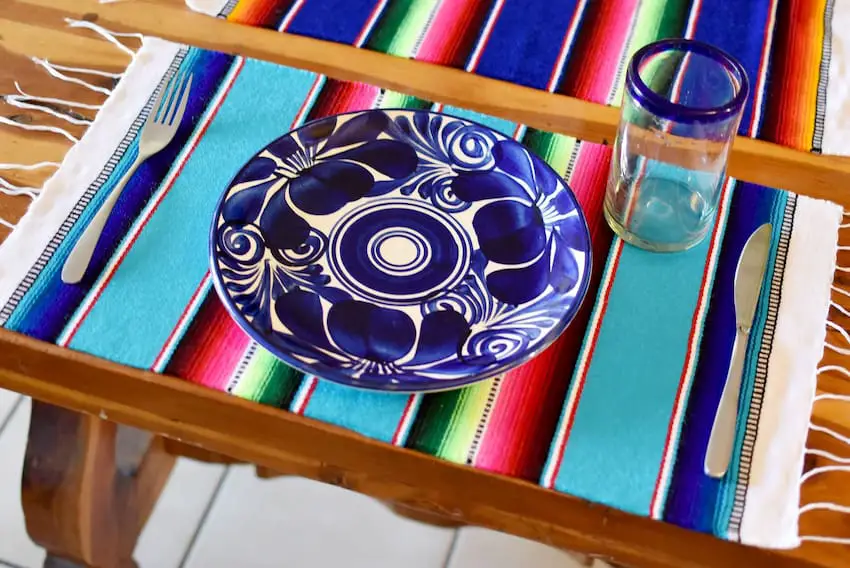Moving expenses can add up quickly. Between deposits, transportation fees, and relocation costs, the thought of designing your new Mexican home might feel overwhelming.
You could hire an interior decorator. You could order from Amazon or Ikea. You could go shopping at Walmart or Sam’s Club.

Or, you could design your new home with quality, affordable items made right here in Mexico.
From storage to cleaning, artisan-made solutions abound and can be found at your neighborhood market. Buying small business products isn’t just a show of support for the economy, it’s also a subtle way to immerse yourself into your new community here in Mexico.
So instead of stocking up that virtual Ikea cart, head to your weekly tianguis and shop these quality products that will transform your space into the stylish Mexican home of your dreams.
Hand-woven baskets

Baskets come in various sizes and can be used as hampers, plant pots, storage boxes, and closet organizers. The prices will vary depending on where you buy them — for example, in Mexico City, baskets are sold on the street of Roma for about three times the price of a shop in Centro Histórico. Still, they’re generally cheaper and much more authentic than plastic storage containers from Ikea, with prices starting around 100 pesos for a 20 cm x 30 cm basket.
Cleaning rags
Mexican-style cleaning rags are works of art. In fact, I often have a hard time using them because they’re so pretty. Some are the size of a washcloth and others a bath towel.
Most are made of cotton and they come in all sorts of colors, usually with a stripe down the middle. Prices vary, but I’ve yet to be quoted more than 40 pesos for any size. I hang them on hooks in my kitchen as decor and for easy access.
Pillows, blankets, and rugs
Loom-woven blankets, pillows, and rugs, made of cotton or wool, are as Mexican as it comes. I just bought an eggshell-colored (known here as bone, or hueso) cotton blanket for my full-sized bed for 1,800 pesos. The two matching throw pillows I splurged on cost 600 pesos and my bed looks like it came straight out of a Mexican Architectural Digest.
Your closest crafts market will sell these items in droves, so look for anything called El Mercado de Artesanías, which you can find in every city from Oaxaca to Querétaro.
Local art
Brightly-painted Mexican-style art isn’t cheap, per se, but it isn’t outrageous either. Here in Mexico City, there are weekly outdoor markets for local artists to showcase their latest masterpieces. Prices are really all over the place, but the satisfaction that you’re supporting the community while also making your home a bit more cozy is the best investment there is.
If what you want is art but you don’t want to necessarily invest in the next Rufino Tamayo, beeline directly to your town or city’s main square and ask about the mercado del arte. Some artists sell their work on the street every day of the week, like they do in Oaxaca City, while others follow a weekly location rotation as they do in CDMX.
Plants

The last potted plant I bought in Miami was a simple rubber plant in a blue clay pot. It cost me US$75, and that was before inflation.
The first potted plant I bought in Mexico City was an indoor palm tree double that size, and it cost me 200 pesos. Needless to say, I now live in an indoor garden. My home feels comfortable, aesthetically Mexican, and clean.
Instead of Home Depot, buy plants at a vivero — a greenhouse that sells all species of live plants. Many cities construct viveros in the center according to season. For example, orchid vendors filled Mexico City’s Avenida Reforma over the weekend.
Dishware
I’m lucky enough to live around the corner from a bus that takes me to Puebla anytime I want. When I get there, I stock up on Talavera plates, drinking cups, and vases. My latest purchase was a set of four blue-and-white cups for which I paid a whopping 500 pesos.
Are they real, authentic, one-of-a-kind Talavera? Doubtful. But they look the part, they’re made in Mexico, and they match perfectly with the similarly designed dishes and bowls I had bought a month prior. Not to mention, the color contrast looks gorgeous on the off-white cotton tablecloth I bought in Oaxaca City for 1,200 pesos.
If multicolored dishes aren’t your style, terra cotta ceramic dishes and cookware are beautiful, sturdy, and affordable almost everywhere. Shop these items at the artisanal market closest to you, like Mercado de Artesanías in San Miguel de Allende or El Parián in Puebla.
Mirrors
The plastic full-length Ikea mirror 40cm x 150cm starts at 1,200 pesos. For the same price or better, you can get a sturdy, wooden mirror in the hue of your choice, including glittering gold.
Smaller mirrors for decorative purposes start at 100 pesos and are a great way to bring light to a room that doesn’t get much sun. Mix and match them on the wall with framed pictures for a unique, artsy look.
Mirrors are usually sold wherever framed art is on display, so check out your neighborhood art market. CDMX’s Colonia San Rafael famously hosts a mercado del arte every Sunday where you can purchase mirrors of all sizes.
Vases
Cut flowers are significantly more affordable than I was accustomed to in the States, so I religiously buy a bunch of lilies every other Sunday because they’re lovely and aromatic. For this, I need vases, which I’ve collected in a handful of places including an antique street market, the El Parián artisan market in Puebla, and on Avenida Reforma in Mexico City.
If you do plan to buy a vase from a street vendor, flip it over to make sure it has been made in Mexico, as Chinese knock-offs have been known to sneak their way to the local tianguis on occasion.
Look for your city’s local ceramics store for beautifully crafted vases, like Tradición Bernabe in Guadalajara’s Tonalá section or Mercado De Artesanías La Ciudadela in Mexico City.
Placemats

These are such a fun and easy way to bring pizazz to your dining area. They are made of palm fiber, woven in the shape of circles or ovals and are dyed all colors of the rainbow. If, say, you buy terra-cotta ceramic dishware, you can liven things up with an orange or yellow placemat, which shouldn’t run you more than 200 pesos for a set of four.
Artisanal markets are full of crafts like placemats. Scope out the weekly art tianguis or find the closest fixed mercado de artisanaría, like the one in Coyoacán, CDMX or Lucas de Galvez Market in Mérida.
Did I miss anything? Leave a comment below! Let other readers know what bargain purchases you’ve made that have livened up your Mexican home.
